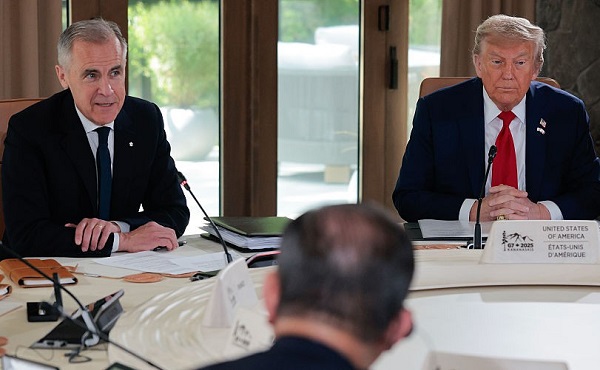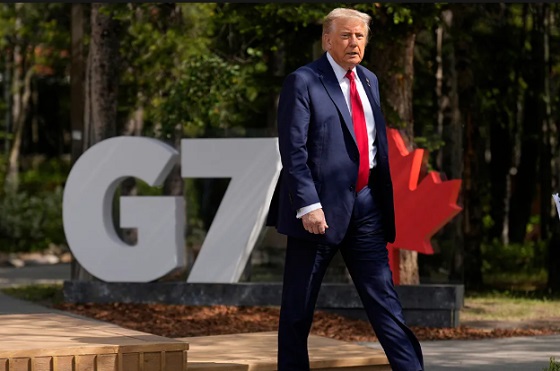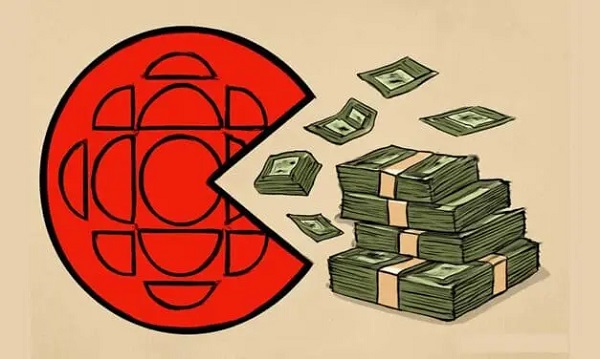Business
Council to vote on $3 million grant and $19 million loan for Westerner Park

City Administration recommending stronger legal oversight and financial support for Westerner Park
The proposed agreement includes increased City involvement in the decision making process for Westerner Park’s future and financials. It also proposes financial support that responds to short-term operational needs as well as long term-financial sustainability. The proposed financial support comes with a price tag of $22 million.
“In 2019, Westerner Park notified us about their financial instability, and we have since been working with them to ensure they not only survive the economic downturn and global pandemic, but thrive when in-person events and entertainment can resume,” said City Manager Allan Seabrooke. “We are recommending financial support, and a Relationship Framework Agreement inclusive of an updated Master Plan and an Asset Management Plan.”
The first item being recommended is a $3 million cash investment in the form of a grant to ensure continued operations of Westerner Park through the pandemic. A $19 million capital loan is also recommended to enable Westerner Park to pay out an unsustainable loan they currently hold, related to the expansion of Exhibition Hall.
If approved, the proposed $3 million grant is not expected to impact property taxes as it would be funded through the operating reserve; however, the $19 million loan would be funded through debt, and with the proposed payback plan, there would need to be adjustments to The City’s overall capital plan to accommodate this funding.
At this time, without support from The City of Red Deer, Westerner Park cannot continue to operate based on current capital and operating projections.
“It is unfortunate that The City has to consider doing this, but ensuring the success of Westerner Park is mutually beneficial as it drives $150 million in economic activity annually when normal operations are possible. Westerner Park is an important part of the region’s economic recovery and long term community resiliency,” said Seabrooke. “We based our recommendations for financial support on seven years of data and we are confident Westerner Park will be able to pull through these tough times, pay back any loans received, and thrive.”
In addition to this funding, the recommended Relationship Framework Agreement aims to formalize the necessary level of oversight The City will require that is not covered in the previous agreements. The new framework will mean The City has a higher level of involvement in decision-making, budgeting, lease agreements and other major items relating to Westerner Park.
The proposed relationship agreement also outlines expectations on roles and processes for completing a Master Plan for Westerner Park. The plan is expected to establish the 15-year vision, land use concept, multi-modal transportation plan, building design principles and site-servicing concept.
“It is proposed that the first step outlined in the agreement is for Council to discuss and determine the essential elements for what needs to be included in the Master Plan,” said Seabrooke. “Once the plan has been developed, it will go for approval through resolution at an open Council meeting.”
An asset management plan will be developed to ensure all infrastructure on the grounds is maintained. This plan will provide a guide for capital investment to support the long term planning for the site.
Please see attached FAQ Backgrounder for more details. April 2021 – FAQ – WEA (pdf)
Business
Canada’s critical minerals are key to negotiating with Trump

From Resource Works
The United States wants to break its reliance on China for minerals, giving Canada a distinct advantage.
Trade issues were top of mind when United States President Donald Trump landed in Kananaskis, Alberta, for the G7 Summit. As he was met by Prime Minister Mark Carney, Canada’s vast supply of critical minerals loomed large over a potential trade deal between North America’s two largest countries.
Although Trump’s appearance at the G7 Summit was cut short by the outbreak of open hostilities between Iran and Israel, the occasion still marked a turning point in commercial and economic relations between Canada and the U.S. Whether they worsen or improve remains to be seen, but given Trump’s strategy of breaking American dependence on China for critical minerals, Canada is in a favourable position.
Despite the president’s early exit, he and Prime Minister Carney signed an accord that pledged to strike a Canada-US trade deal within 30 days.
Canada’s minerals are a natural advantage during trade talks due to the rise in worldwide demand for them. Without the minerals that Canada can produce and export, it is impossible to power modern industries like defence, renewable energy, and electric vehicles (EV).
Nickel, gallium, germanium, cobalt, graphite, and tungsten can all be found in Canada, and the U.S. will need them to maintain its leadership in the fields of technology and economics.
The fallout from Trump’s tough talk on tariff policy and his musings about annexing Canada have only increased the importance of mineral security. The president’s plan extends beyond the economy and is vital for his strategy of protecting American geopolitical interests.
Currently, the U.S. remains dependent on China for rare earth minerals, and this is a major handicap due to their rivalry with Beijing. Canada has been named as a key partner and ally in addressing that strategic gap.
Canada currently holds 34 critical minerals, offering a crucial potential advantage to the U.S. and a strategic alternative to the near-monopoly currently held by the Chinese. The Ring of Fire, a vast region of northern Ontario, is a treasure trove of critical minerals and has long been discussed as a future powerhouse of Canadian mining.
Ontario’s provincial government is spearheading the region’s development and is moving fast with legislation intended to speed up and streamline that process. In Ottawa, there is agreement between the Liberal government and Conservative opposition that the Ring of Fire needs to be developed to bolster the Canadian economy and national trade strategies.
Whether Canada comes away from the negotiations with the US in a stronger or weaker place will depend on the federal government’s willingness to make hard choices. One of those will be ramping up development, which can just as easily excite local communities as it can upset them.
One of the great drags on the Canadian economy over the past decade has been the inability to finish projects in a timely manner, especially in the natural resource sector. There was no good reason for the Trans Mountain pipeline expansion to take over a decade to complete, and for new mines to still take nearly twice that amount of time to be completed.
Canada is already an energy powerhouse and can very easily turn itself into a superpower in that sector. With that should come the ambition to unlock our mineral potential to complement that. Whether it be energy, water, uranium, or minerals, Canada has everything it needs to become the democratic world’s supplier of choice in the modern economy.
Given that world trade is in flux and its future is uncertain, it is better for Canada to enter that future from a place of strength, not weakness. There is no other choice.
Business
Rhetoric—not evidence—continues to dominate climate debate and policy

From the Fraser Institute
Myths, fallacies and ideological rhetoric continue to dominate the climate policy discussion, leading to costly and ineffective government policies,
according to a new study published today by the Fraser Institute, an independent, nonpartisan Canadian public policy think-tank.
“When considering climate policies, it’s important to understand what the science and analysis actually show instead of what the climate alarmists believe to be true,” said Kenneth P. Green, Fraser Institute senior fellow and author of Four Climate Fallacies.
The study dispels several myths about climate change and popular—but ineffective—emission reduction policies, specifically:
• Capitalism causes climate change: In fact, according to several environment/climate indices and the Fraser Institute’s annual Economic Freedom of the World Index, the more economically free a country is, the more effective it is at protecting its environment and combatting climate change.
• Even small-emitting countries can do their part to fight climate change: Even if Canada reduced its greenhouse gas emissions to zero, there would be
little to no measurable impact in global emissions, and it distracts people from the main drivers of emissions, which are China, India and the developing
world.
• Vehicle electrification will reduce climate risk and clean the air: Research has shown that while EVs can reduce GHG emissions when powered with
low-GHG energy, they often are not, and further, have offsetting environmental harms, reducing net environmental/climate benefits.
• Carbon capture and storage is a viable strategy to combat climate change: While effective at a small scale, the benefits of carbon capture and
storage to reduce global greenhouse gas emissions on a massive scale are limited and questionable.
“Citizens and their governments around the world need to be guided by scientific evidence when it comes to what climate policies make the most sense,” Green said.
“Unfortunately, the climate policy debate is too often dominated by myths, fallacies and false claims by activists and alarmists, with costly and ineffective results.”

Kenneth P. Green
Senior Fellow, Fraser Institute
-

 Business2 days ago
Business2 days agoCarney praises Trump’s world ‘leadership’ at G7 meeting in Canada
-

 conflict2 days ago
conflict2 days agoTrump leaves G7 early after urging evacuation of Tehran
-

 Business1 day ago
Business1 day agoThe CBC is a government-funded giant no one watches
-

 conflict1 day ago
conflict1 day agoMiddle East clash sends oil prices soaring
-

 Business1 day ago
Business1 day agoTrump makes impact on G7 before he makes his exit
-

 Business2 days ago
Business2 days agoTrump family announces Trump Mobile: Made in America, for America
-

 Crime2 days ago
Crime2 days agoUK finally admits clear evidence linking Pakistanis and child grooming gangs
-

 Also Interesting2 days ago
Also Interesting2 days agoHow to Use Bonuses at Magius Casino and Similar Websites






